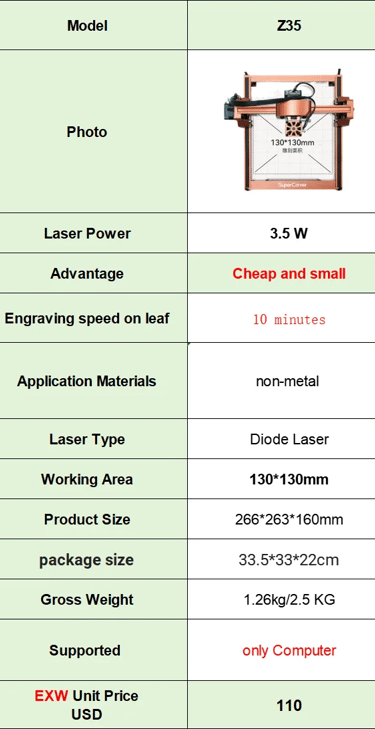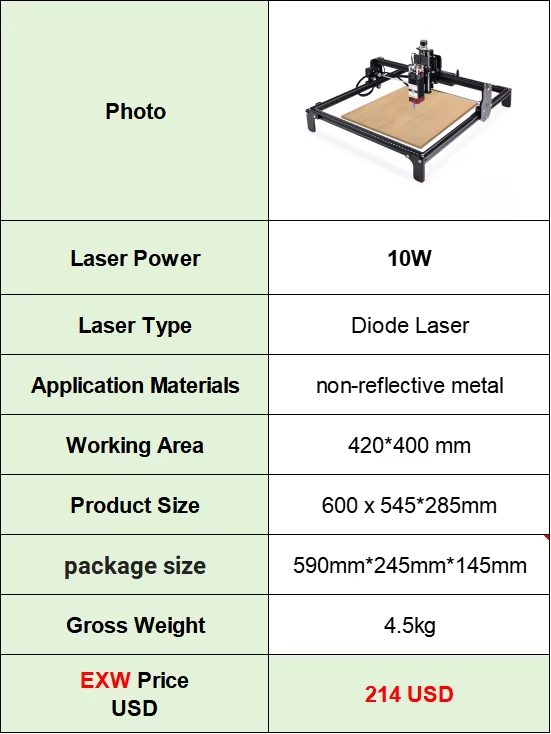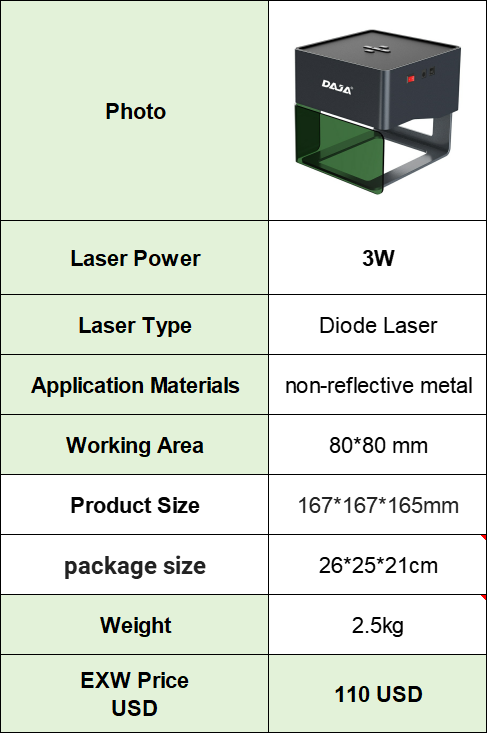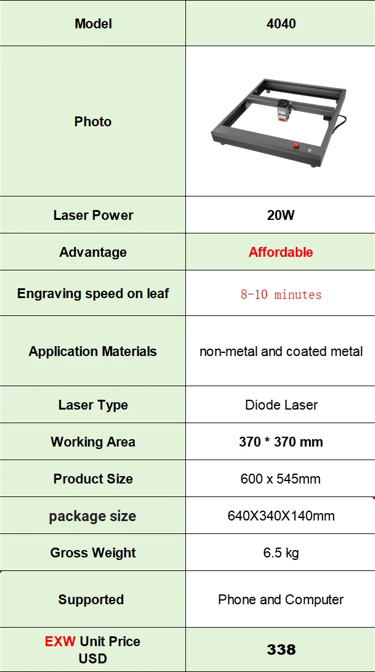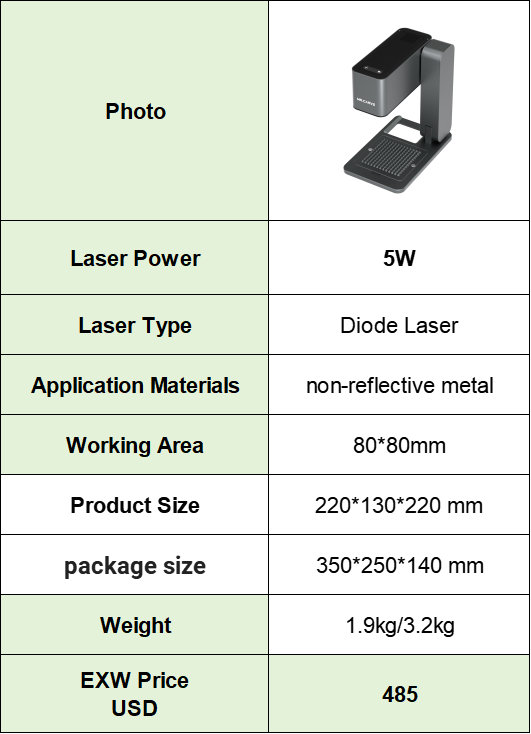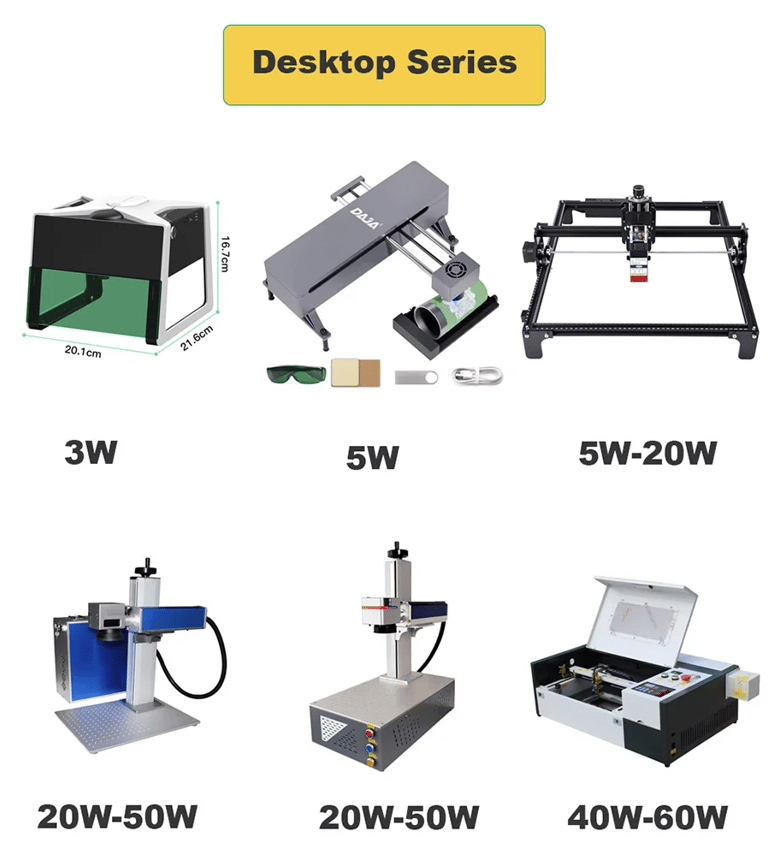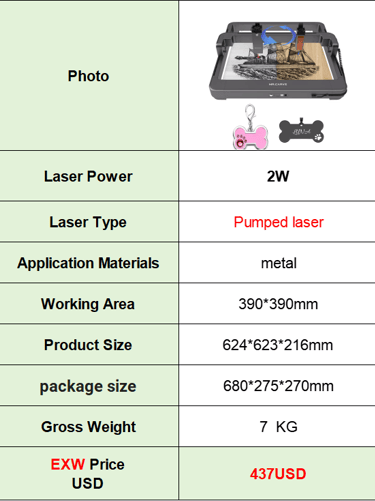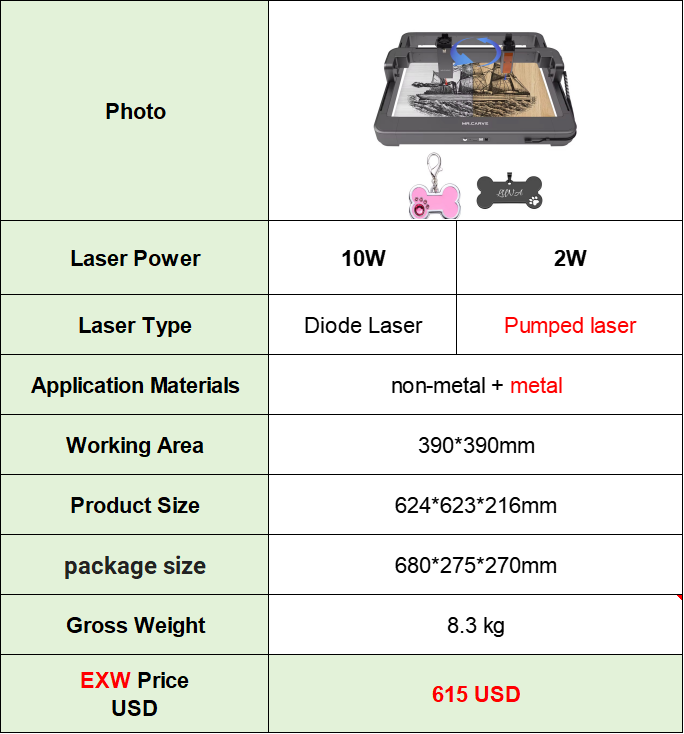Unleashing the Power of Laser Engraving: A Comprehensive Guide to Choosing the Right Machine for Your Projects
HOME SUPPLIES
8/6/20237 min read


Introduction: The Power of Laser Engraving Machines
Laser engraving has evolved into an indispensable technology for a variety of industries, from creative hobbies to high-end industrial applications. With the ability to etch, mark, and cut materials with precision and speed, laser engraving machines have become essential tools for everything from personalized gifts to complex manufacturing processes. But with so many options available, how do you know which laser engraving machine is right for your needs?
In this in-depth guide, we'll explore the different types of laser engraving machines, breaking down their key features, power levels, and applications across various materials. From DIY enthusiasts to industrial professionals, understanding the nuances of different laser types—Diode, Fiber, CO2, and UV—will help you make an informed decision about the best machine for your projects. We will dive into power ratings, wavelengths, cooling systems, and even material compatibility to ensure you choose the best fit for your work.
Let’s start by understanding the basics of laser engraving and the differences between these machines.
Understanding Laser Engraving: The Basics
Laser engraving uses concentrated beams of light to etch, mark, or cut materials. Unlike traditional engraving techniques, which use physical tools to create designs, laser engraving uses non-contact methods, which means there’s no direct physical interaction between the machine and the material being worked on. This allows for precision, intricate designs, and faster production speeds.
Each laser engraving machine operates based on its specific laser type, which determines its application and compatibility with different materials. Diode lasers, for example, are excellent for detailed work on non-metallic materials but may not handle metals well. Fiber lasers, on the other hand, are designed primarily for metal engraving, offering precision and speed. CO2 and UV lasers fill niches between these extremes, each suited for different materials and engraving needs.
Types of Laser Engraving Machines
Laser engraving machines come in various shapes and sizes, each optimized for different tasks. The two most important factors to consider when choosing a laser engraving machine are the type of laser and the material you plan to work with. Below, we break down the most common laser types used in engraving and their unique features.
Diode Lasers: A Budget-Friendly Solution for DIY Projects
Diode lasers are a popular choice for hobbyists and DIY enthusiasts due to their affordability and ease of use. Typically, they range from 3W to 20W in power and have a wavelength of 450nm, making them well-suited for engraving non-metallic materials like wood, leather, and plastics. However, while they can engrave on painted metals or non-reflective metal surfaces, they are not effective on highly reflective materials or transparent substances.
One of the key features of diode lasers is their compact design, making them ideal for smaller projects. DIY models, in particular, often come with working areas ranging from 8x8 cm to 40x40 cm. With air cooling systems, these machines offer a balance of power and portability, allowing for detailed work without overheating during prolonged use. However, the engraving speed on these machines tends to be slower compared to more powerful options.
Applications of Diode Lasers:
Engraving designs on wood, acrylic, leather, and non-reflective painted metals
Personalizing gifts like keychains, phone cases, and jewelry
Creating intricate designs for home décor items
Fiber Lasers: Precision for Metal Engraving
Fiber lasers are primarily designed for engraving metals and hard plastics. With a wavelength of 1064nm and power levels ranging from 2W to 100W, these lasers provide superior precision and speed, making them ideal for applications like marking serial numbers, logos, and barcodes on metal surfaces. Unlike diode lasers, fiber lasers can’t cut through metal; they are used exclusively for surface engraving, which makes them perfect for industrial applications where high-quality metal marks are required.
A key advantage of fiber lasers is their efficiency. They are capable of engraving at much higher speeds compared to CO2 lasers, particularly when marking metals. Additionally, fiber lasers have a longer lifespan and lower maintenance costs, making them ideal for high-volume production.
Applications of Fiber Lasers:
Marking and engraving on metals like stainless steel, aluminum, and titanium
Industrial applications such as creating barcodes, logos, and part identification numbers
Engraving on hard plastics for electronics components and automotive parts
CO2 Lasers: Versatile and Powerful for Non-Metallic Materials
CO2 lasers are the most widely used type of laser engraving machine, offering a wide range of applications and capabilities. With power levels ranging from 30W to 300W and wavelengths between 9.3um and 10.6um, CO2 lasers are excellent for engraving and cutting non-metallic materials like wood, acrylic, leather, glass, and rubber. These lasers are capable of detailed engravings, cuts, and even intricate designs, making them versatile tools for both personal and industrial use.
CO2 lasers are available in different sizes, with small desktop models offering working areas of around 8x8 cm, while larger machines can cover working areas up to 100x100 cm or more. Depending on the machine's power, they can perform detailed engravings or cut through thick materials. CO2 lasers can be either air-cooled or water-cooled, with higher-powered models generally requiring water cooling to avoid overheating during extended use.
Applications of CO2 Lasers:
Engraving and cutting wood, acrylic, glass, and leather for personalized gifts and signage
Creating intricate designs on rubber for stamps and custom branding
Engraving glassware and creating awards and trophies
UV Lasers: Ideal for Precision Work on Sensitive Materials
UV lasers have become the go-to choice for high-precision applications requiring minimal heat impact. With a wavelength of 355nm and power ranging from 3W to 10W, UV lasers offer exceptional accuracy while working on delicate materials like glass, plastic, and even organic substances such as leaves. Unlike other laser types, UV lasers generate very little heat, reducing the risk of material deformation or discoloration.
These lasers are particularly useful for applications in industries like electronics, medical device manufacturing, and luxury goods marking. UV lasers are often used to engrave fine details on glass, crystal, and plastic, as well as for engraving precise logos or serial numbers on small electronic components.
Applications of UV Lasers:
Fine detailing on glass, crystal, and plastic items
Engraving logos and serial numbers on medical devices, electronics, and automotive parts
Delicate work on organic materials like leaves and thin fabrics
Key Factors to Consider When Choosing a Laser Engraving Machine
When selecting a laser engraving machine, there are several factors you need to consider to ensure you pick the right one for your projects.
Material Compatibility
One of the most important considerations when choosing a laser engraving machine is the material you plan to work with. Different laser types are optimized for different materials, so it’s essential to choose a laser that can handle your specific needs. For example, diode lasers are great for non-metallic materials, while fiber lasers are designed for metal engraving. CO2 lasers are versatile and can handle a wide range of materials, including wood, acrylic, and leather.
Power and Size
Laser engraving machines come in different power levels, typically ranging from 2W to 300W. The higher the power, the faster and deeper the laser can engrave or cut materials. Smaller machines with lower power are generally used for light-duty engraving and smaller projects, while larger, higher-powered machines are better suited for cutting thicker materials and high-volume work. Additionally, consider the size of the engraving area. DIY and small machines have smaller working areas, while larger industrial machines can accommodate larger pieces or multiple items simultaneously.
Cooling Systems
Cooling is crucial in maintaining the performance and longevity of your laser engraving machine. Machines with higher power often require more cooling, with air-cooled systems being sufficient for low-power models and water-cooled systems being necessary for high-powered machines. When choosing a machine, make sure the cooling system can handle the machine's power and ensure it runs efficiently without overheating.
Conclusion: Choosing the Right Laser Engraving Machine for Your Needs
Laser engraving machines offer immense possibilities for personalization, creativity, and industrial production. Understanding the various types of lasers, their applications, and their key features can help you make an informed decision on which machine is right for your needs. Whether you’re a hobbyist, a small business owner, or a large manufacturer, there is a laser engraving machine out there that can help you take your projects to the next level.
By considering factors such as material compatibility, power levels, cooling systems, and the size of your projects, you can choose the best laser engraving machine for your specific requirements. With the right machine, you’ll be able to create intricate designs, mark products, and even cut through materials with speed and precision.
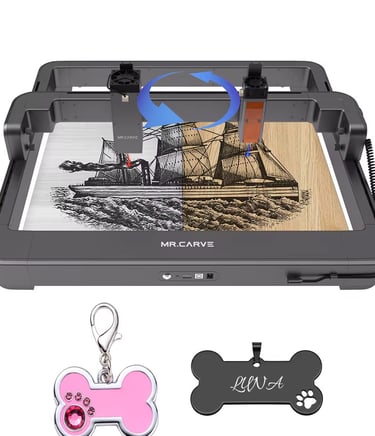

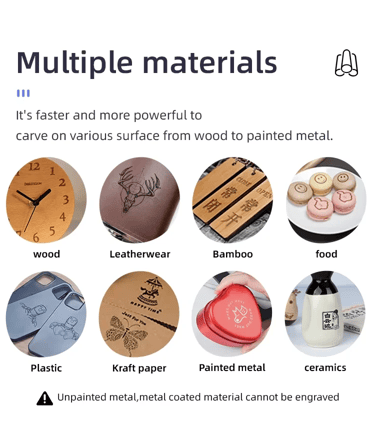

Recommended DIY Small Laser Machines and Prices
DIY Small Diode 3W-20W
DIY Small Fiber 2W &10W
